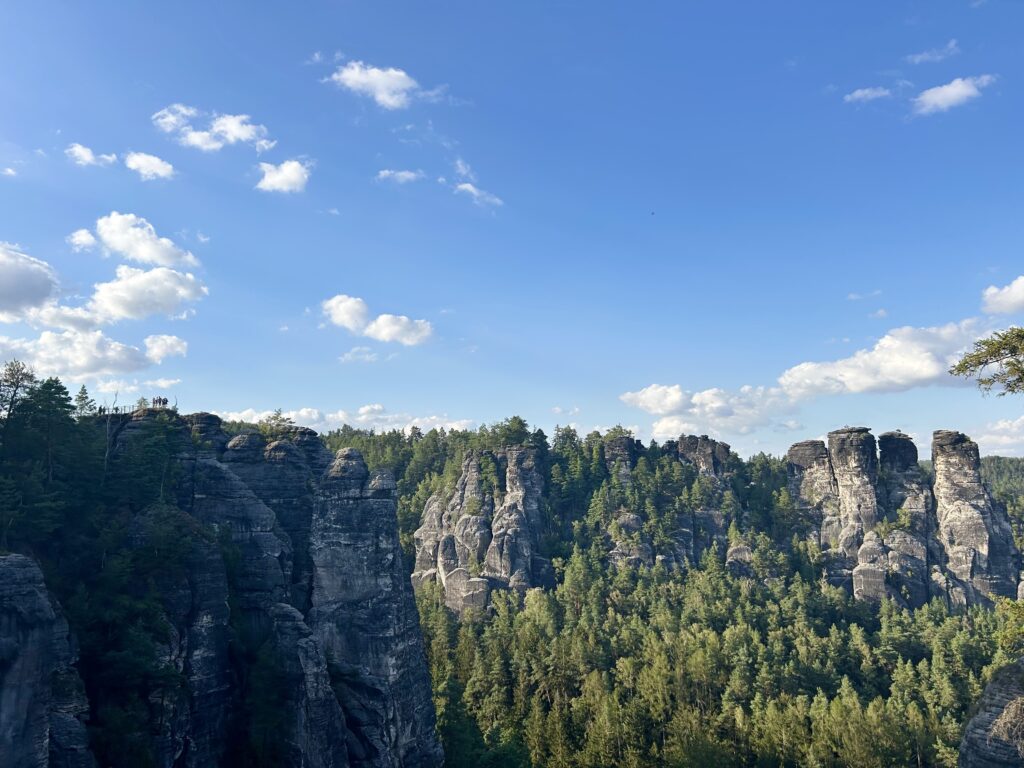
Saxon Switzerland National Park is a breathtaking natural paradise in eastern Germany, loved for its nature with unique rock formations, and a network of hiking and cycling trails.
Spanning 93 kilometers along the border with the Czech Republic, Saxon Switzerland National Park spreads across two countries in borderless beauty. With over 700 summits and 400 kilometers of trails winding through this wild and unspoiled region Saxon Switzerland National Park is a must for nature lovers
This guide should prepare you for an unforgettable adventure in one of Germany’s hidden gems. Whether you’re exploring the stunning viewpoints, hiking the trails, or simply soaking in the natural beauty, this national park has something for everyone.
Saxon Switzerland National Park Map
Navigating Saxon Switzerland National Park is made easier with a detailed map. You can get a physical map at the Nationalparkzentrum in Bad Schandau. The map highlights key trails, scenic viewpoints, and essential stops such as the Bastei Bridge, Königstein Fortress, and other attractions. Otherwise there’s countless maps online.
This guide will help you plan your hikes, decide on viewpoints to visit, and navigate the area.
What’s the difference between Bohemian and Saxon Switzerland National Park?
It’s good to know that Saxon and Bohemian National Park are essentially the same park but are split in half between Germany and Czech Republic. Saxon Switzerland National Park is the German side of the park which extends into the Czech Republic, where it is known as Bohemian Switzerland National Park.
Both parks are rewarded for their free access and borderless trails, making it an excellent destination for budget-conscious travellers who love nature and exploring hidden areas.
This cross-border region is also famous for the Elbe Sandstone Mountains and the stunning Pravčická Brána, the largest natural sandstone arch in Europe. A hike across the border will take you through forests, stone formations and several hidden gems like the Sokolí hnízdo Inn.
Fun fact: did you know that Bohemian Switzerland National Park inspired the landscape of Narnia!?
The seamless connection between Saxon and Bohemian Switzerland allows you to experience two countries’ natural beauty in one trip.
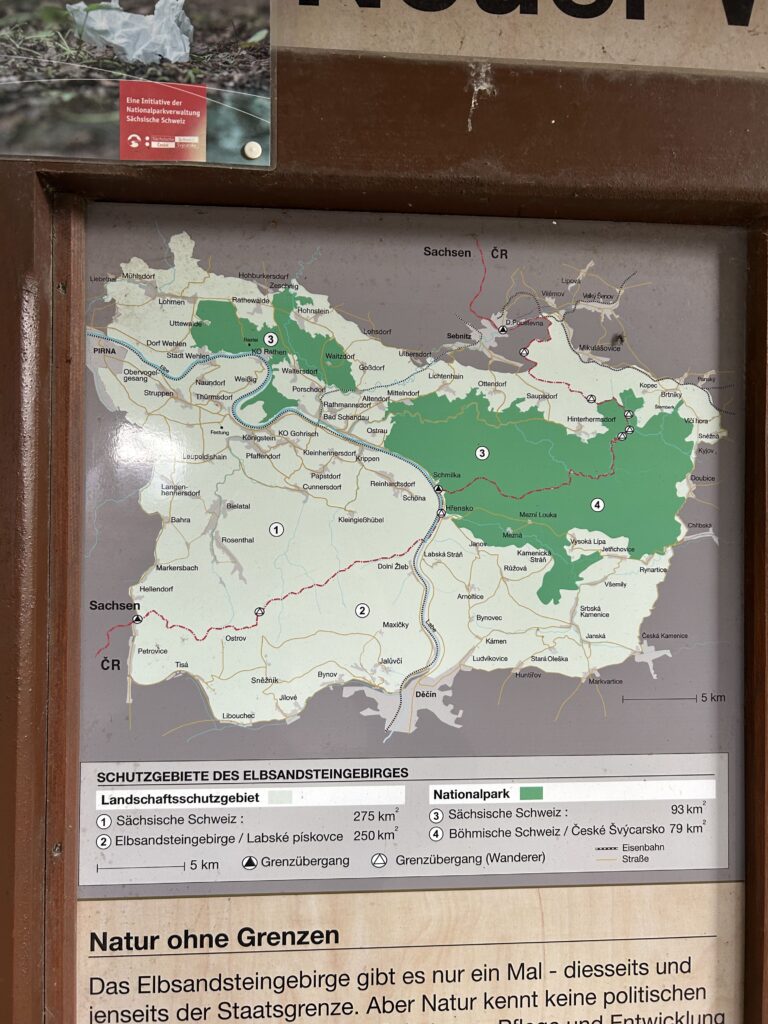
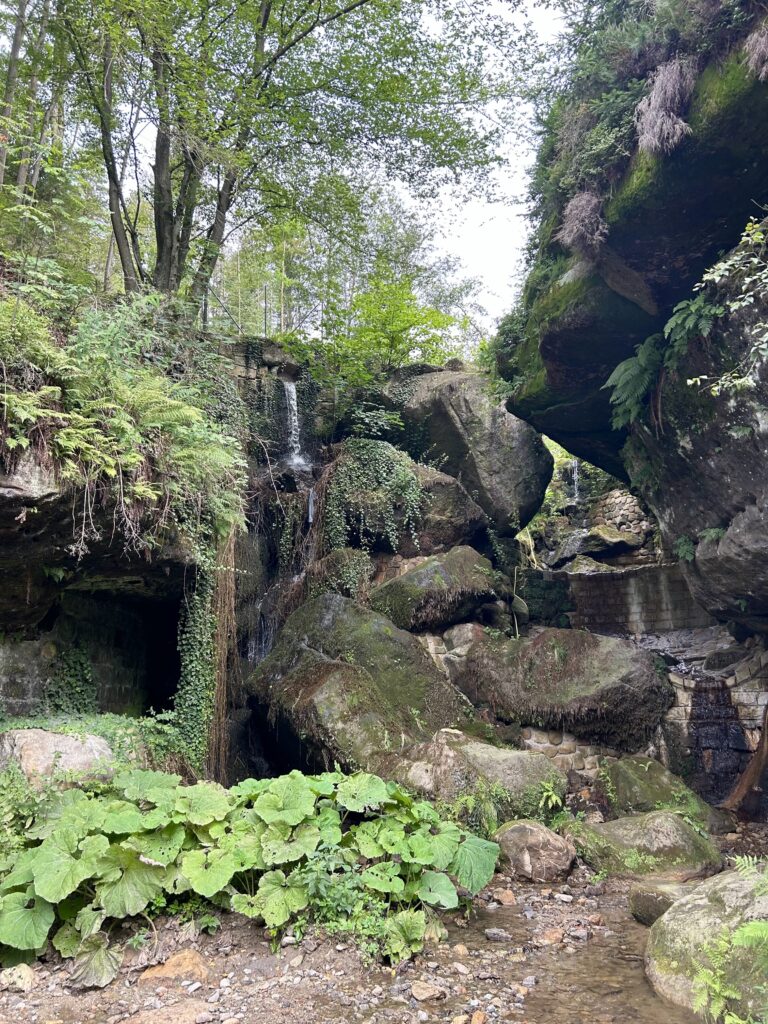
Hiking in Saxon Switzerland National Park
Hiking is one of the main attractions in Saxon Switzerland National Park, offering routes for all experience levels. Ranging from long and challenging hikes to shorter and more accommodating walks, there are numerous trails to explore.
I’ll share my key takeaways from hiking in the national park as well as some hikes I think are worth it.
What to Bring?
When hiking in Saxon Switzerland National Park, be sure to pack essentials such as:
- Sturdy hiking boots for rocky terrain.
- A map of the park.
- Plenty of water and snacks, especially for longer hikes.
- Cash, as some attractions require an entrance fee.
- A camera to capture the stunning vistas.
Bastei Bridge in Saxon Switzerland National Park
The Bastei Bridge is one of the park’s most famous landmarks, offering breathtaking views of the surrounding Elbe Sandstone Mountains. Built in 1851, the bridge connects various rock formations and provides access to the ruins of the old Neurathen Castle.
Hiking Bastei Bridge
Saxon Switzerland National Park’s most iconic attraction is the Bastei Bridge, which offers awe-inspiring panoramic views.
Hiking to the Bastei Bridge is a must-do when visiting the park. An early morning hike to the bridge allows you to enjoy the site without the crowds.
It might be a bit misleading calling the walk here a hike. If you’re looking for a short and accessible hike, the Bastei Bridge is only about a 15-20 minute walk from the nearest parking area.
For more adventurous hikers, longer trails are all around the surrounding park, allowing you to go deeper into the rock formations and valleys.
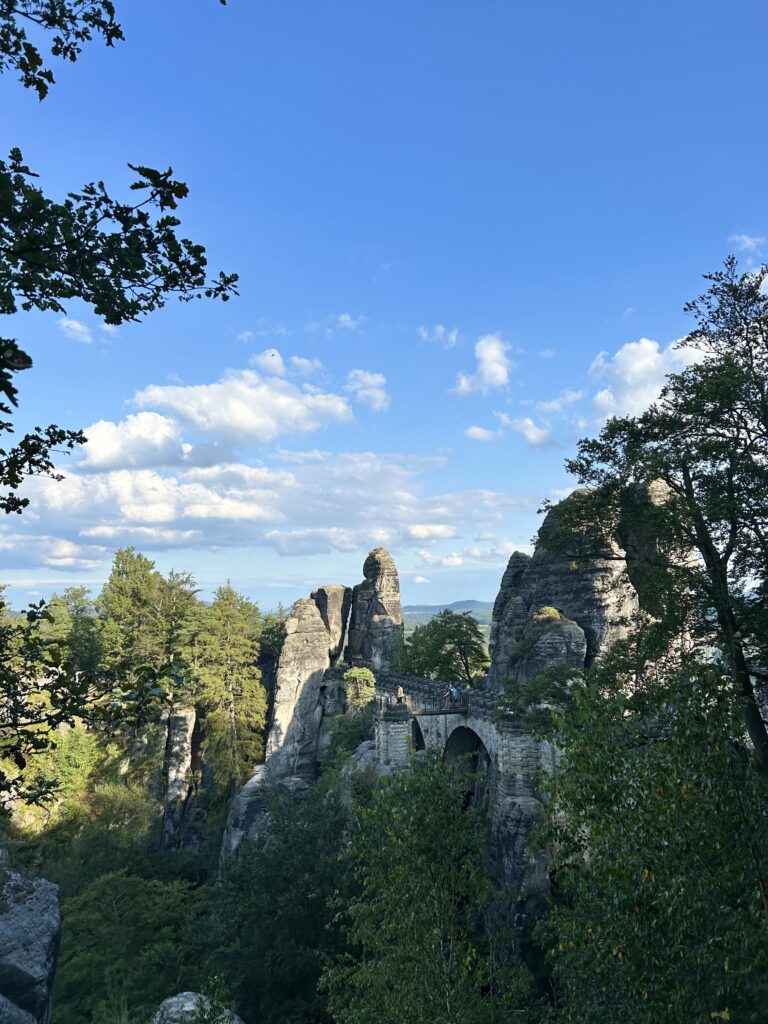
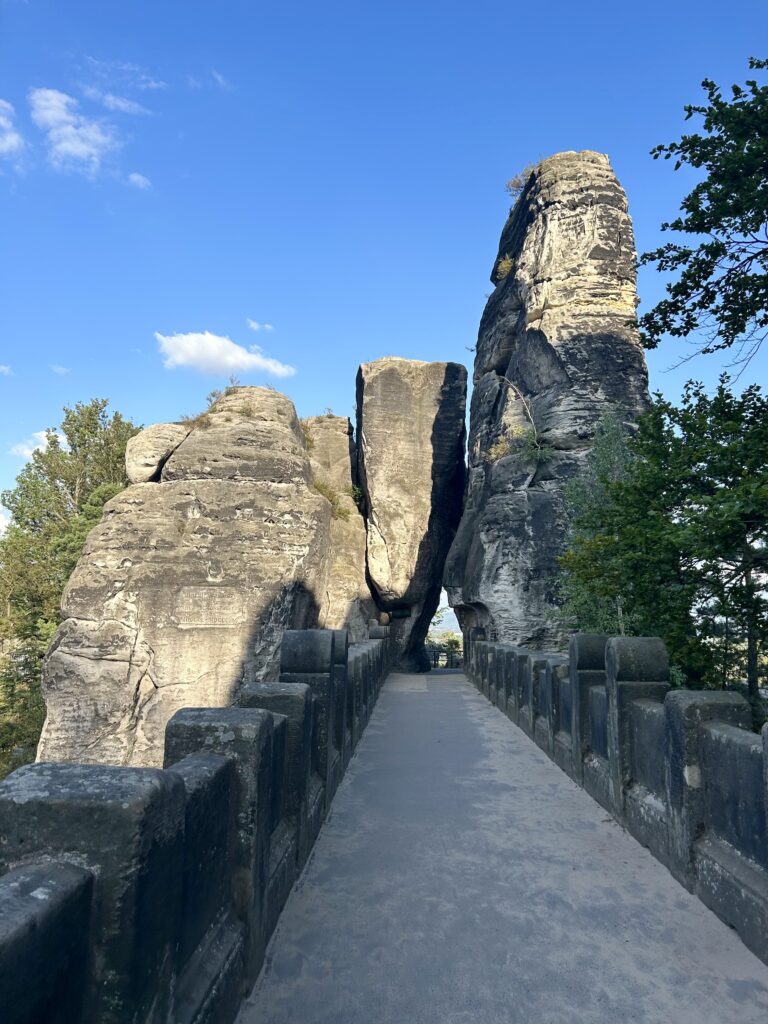
Best Hikes in Saxon Switzerland National Park
Saxon Switzerland National Park is filled with trails that cater to all levels of hikers. Here are two of the best:
Schrammsteine Loop Hike
Length: 7.2 km
Elevation gain: 328 m
Route type: Loop
Difficulty: moderate
Time: 2 h 25 min
See more info about the trail here
This challenging hike offers some of the best views in the park, taking you through rugged terrain and along rocky ridges. The trail winds past towering sandstone formations and provides numerous opportunities for climbers.
Kuhstall Loop Hike
Length: 4.8 km
Elevation gain: 208 m
Route type: Loop
Difficulty: light/moderate
Time: 1 h 35 min
See more info about the trail here
As a moderate hike, the Kuhstall Loop is well marked and takes you to the second-largest natural arch in Saxon Switzerland National Park.
I started the hike from “Parkplatz Lichtenhainer Wasserfall” at 8am. I did not hike the loop but opted to start from the same starting point and hiked back and forth.
Be aware that doing this you will have a 150m elevation climb all the way to Kuhstall (about 20 min. steady walk upwards).
I had the trail and Kuhstall all to myself in july until 9.30am – so go early!
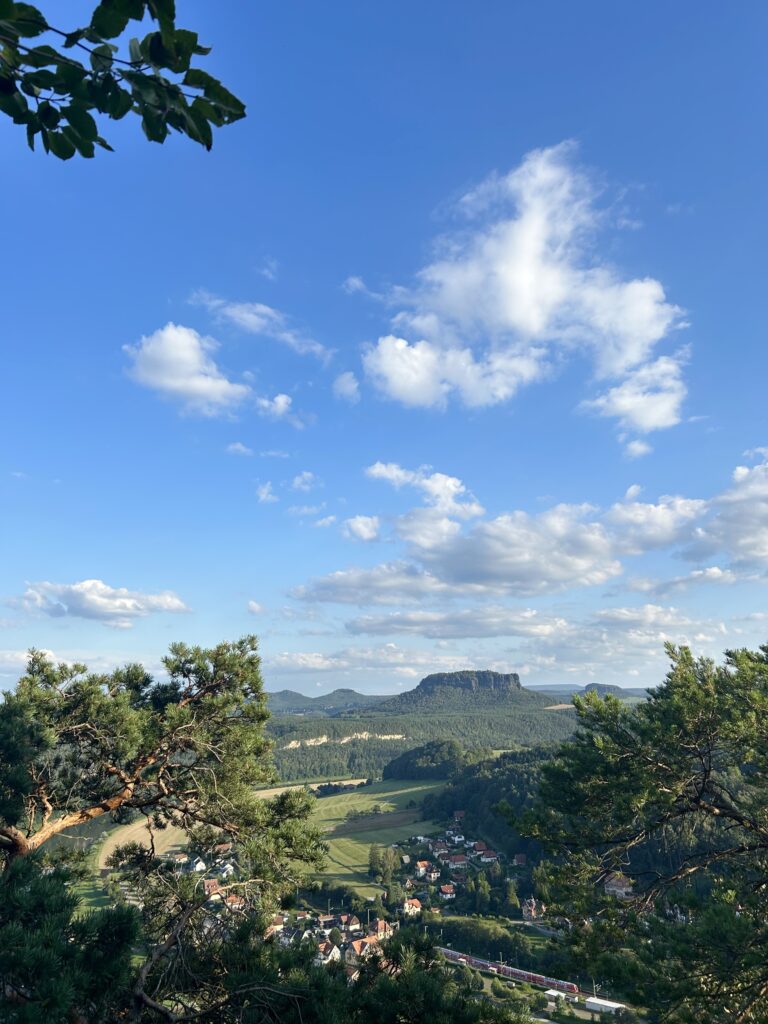
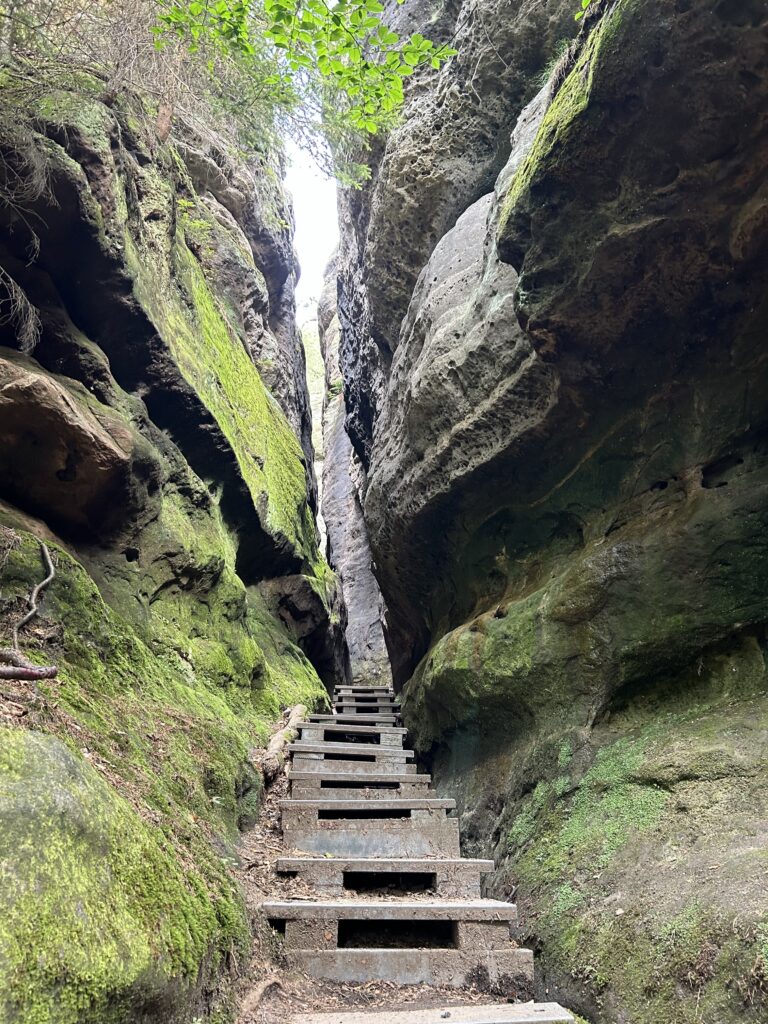
FAQs
Rules of the National Park
Saxon Switzerland National Park has a few rules to ensure the protection of its natural beauty – please follow them!
Stay on designated trails, avoid disturbing wildlife, and carry out any trash. Fire and smoking are not permitted to protect the nature from damage.Camping and free overnight stays are not permitted. An exception to this are the Boofen, which are reserved exclusively for climbers.
Dogs are welcome, but should always be kept on a lead.
Drones are not allowed!
Why Is It Called Saxon Switzerland?
Honestly it’s the most confusing name of any national park I’ve visited but the name “Saxon Switzerland” was coined by two Swiss artists in the 18th century who were reminded of their homeland’s mountainous terrain when they visited this region in Germany (Saxony). Despite the name, the park is located entirely in Germany.
When Is the Best Time to Visit Saxon Switzerland National Park?
The best time to visit the park is in the spring and autumn when temperatures are mild, and the trails are less crowded. Summer can be busy, but if you start your hikes early, you can still enjoy the beauty without the crowds.
Where to stay near Saxon Switzerland National Park
|
Primary Rating:
4.0
|
Primary Rating:
3.6
|
Primary Rating:
4.8
|
Primary Rating:
4.5
|
Primary Rating:
4.5
|
|
€150/night
|
€114/night
|
€75/night
|
€63/night
|
€34/night
|
How to Get to Saxon Switzerland National Park
Saxon Switzerland National Park is well-connected by roads and public transportation, and there are several options for getting there, whether you’re coming from nearby Dresden or further away.
The dense network of bus-lines of the Regionalverkehr Sächsische Schweiz Osterzgebirge (RVSOE) in the entire national park region makes most excursion destinations easily accessible by bus. There’s even a so-called WanderBus (hiking buses), with which the popular hiking areas can be reached without changing buses.
Read more on how to get around / to-and-from Saxon Switzerland National Park here
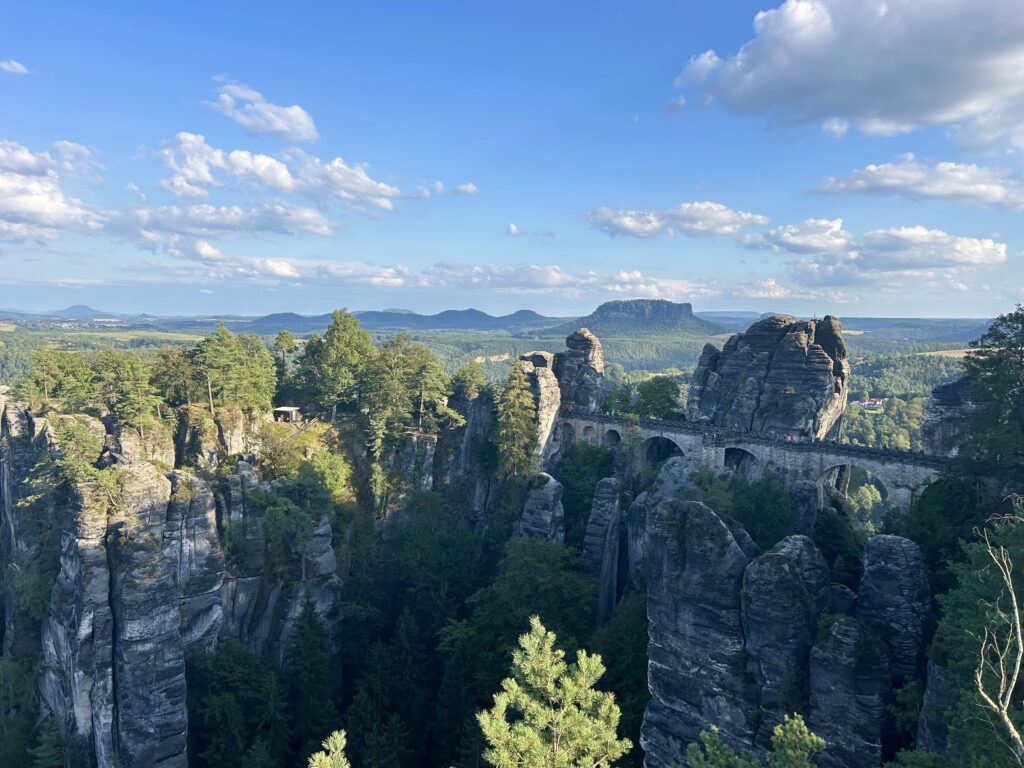
Deutschland-Ticket
The Deutschland-ticket is an unlimited travel ticket valid throughout Germany on regional and local public transport and local trains (not valid in ICE, IC/EC). This is perfect if you plan on travelling around Germany, and saves you a lot of money on longer fares. 1-month unlimited travel cost €49.
Please note that the Deutschland-Ticket is only available by subscription. You can cancel your Deutschlandticket subscription by the 10th of each month to the end of the calendar month.
Buy your Deutschland-ticket here
Bad Schandau to Saxon Switzerland National Park
Bad Schandau is a town located at the entrance to the park and serves as a great base for exploring the area. From here, you can easily access the park by car, train, or bicycle. The Nationalparkzentrum Bad Schandau offers information on hiking trails and attractions. As mentioned earlier the Kurnitzschtalbahn runs from Bad Schandau and stops at 9 different starting points to the trails in Saxon Switzerland National Park.
How to Get to Saxon Switzerland National Park from Dresden
Dresden is the closest major city in Germany, located just 30 kilometers from the park. Trains and buses run regularly from Dresden to various towns near the park, making it a convenient day trip or weekend getaway.
There’s several direct trains running from Dresden to Bad Schandau which only takes 45 min. and costs around €10. See timetables and prices here
Berlin to Saxon Switzerland National Park
Berlin is about a three-hour drive from Saxon Switzerland National Park. If you prefer public transport, there’s a direct train from Berlin to Bad Schandau which takes around 2 hours and 20 min. and costs only €15.
Prague to Saxon Switzerland National Park
Prague in the Czech Republic, is another convenient starting point, with Saxon Switzerland National Park located just two hours away by car. You can also take a train from Prague to Dresden and then connect to the park via regional trains or buses. The direct train to Dresden takes around 2 hours and 40 min. Costing only €20. See timetables here.






